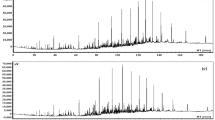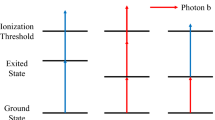Summary
The present directives of European Community have mandated the elimination of Tetraethyl Lead (TEL) as an antiknock additive in motor gasoline to prevent environmental pollution and protect human health. Moreover the European Community has established new guidelines for the Benzene and Aromatic contents of gasoline. These directives have focused the attention on the analytical problems related to the determination of specific compounds of environmental interest in a hydrocarbon matrix.
In the present work two analytical methods are proposed; they are based on a gas chromatographic technique with mass spectrometry detection in selected ions monitoring (GC-MS-SIM) mode. The first one has been used for the volatile compounds (split mode) and the second one for higher boiling compounds (splitless mode).
This technique, because of its selectivity, does not require sample pre-treatment other than the addition of an internal standard. The analysis of a 5–10 mL gasoline sample can be performed in less than 40 minutes. These methods can be considered as accurate tools to evaluate the compounds of toxicological interest in gasoline samples. The analyses were carried out to measure TEL, 1,2-dibromoethane, benzene, aromatic, naphthalene and phenanthrene in samples of different grade of motor gasoline, aviation gasoline and unleaded gasoline.
The sensitivity and reproducibility are compared with other analytical methods as AAS and GC-ECD.
Similar content being viewed by others
References
Material Safety Data Sheet for Aviation Gasoline 100 LL, Esso Italy,1993.
Material Safety Data Sheet for Motor Gasoline, Esso Italy,1995.
European Community Directive 98/70/CEE,1998.
EN 228—Automotive Fuels—Unleaded Petrol—Requirements and Test Methods—1998.
EN 237—Liquid Petroleum Products—Petrol—Determination of Low Lead Concentration by AAS.
EN 238—Liquid Petroleum Products—Petrol Determination of benzene by IR spectrometry.
EN 12177—Liquid Petroleum Products—Unleaded Petrol—Determination of Benzene by GC.
Sung, S.J.; Johnson, S.L.; Parrott, L.J. High. Resolut. Chromatogr. 1994,17, 457–462.
Valverde, T.; Pihlstrom, A.; Andersson, A.Anal. Chim. Acta,1997,338, 63–68.
Bernabei, M.; Spila, E.; Sechi G.Anal. Lett. 1997,30, 2085–2097.
Bernabei, M.; Bocchinfuso, G.; Carrozzo, P.; De Angelis, C.J. Chromatogr A 2000 87, 1235–1241.
IARC Cancer Review, IARC Monographs 93 1982,29,—WHO Publication Centre, Albany, NY.
IARC Cancer Review, IARC Monographs 74 1989,79,—WHO Publication Centre, Albany, NY.
U.S. Environmental Protection Agency's Integrated Risk Information System (IRIS) on Ethylbenzene (100-41-4),1994, National Library of Medicine's TOXNET System.
IARC Cancer Review, IARC Monographs 47 1989,125—WHO Publication Centre, Albany, NY.
U.S. Environmental Protection Agency's Integrated Risk Information System (IRIS) on Naphthalene (91-20-3) 1995, National Library of Medicine's TOXNET System.
IARC Cancer Review, IARC Monographs S7 1987,69—WHO Publication Centre, Albany, NY.
IARC Cancer Review, IARC Monographs S7 1987,230—WHO Publication Centre, Albany, NY.
ACGIH Report 1995, American Conference of Governmental Industrial Hygienists, Cincinnati, OH.
ASTM D 910—Standard Specification for Aviation Gasoline,1999, American Society for Testing and Materials, Philadelphia, PA.
SAE J 312—Automotive Gasolines,1998, Society for Automotive Engineers Ltd., Warrendale, PA.
ASTM D 1319—Standard Test Method For Hydrocarbon Types In Liquid Petroleum Products By Fluorescent Indicator Adsorption,1993, American Society for Testing and Materials, Philapdelphia, PA.
Author information
Authors and Affiliations
Rights and permissions
About this article
Cite this article
Bocchinfuso, G., Aiello, L., Ferone, V. et al. Toxicological evaluation of gasolines by GC-MS analysis. Chromatographia 53 (Suppl 1), S345–S349 (2001). https://doi.org/10.1007/BF02490354
Received:
Revised:
Accepted:
Issue Date:
DOI: https://doi.org/10.1007/BF02490354




